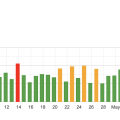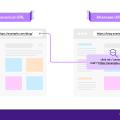Hey there! Today, we’re going to talk about a game-changing technique called Content SEO. You may have heard the term before, but do you really know what it’s all about? Well, buckle up because we’re about to take a closer look at how Content SEO can skyrocket your website’s visibility, attract more organic traffic, and ultimately drive your business to new heights.
So, let’s get started and discover the power of Content SEO! Content SEO, also known as search engine optimization, is the practice of optimizing your website’s content to improve its visibility and ranking on search engine results pages (SERPs).
By following content SEO best practices, you can attract more organic traffic to your site, increase your online visibility, and ultimately boost your website’s performance.
Definition
Content SEO revolves around optimizing the content on your website to make it more appealing to search engines. It involves using relevant keywords, creating high-quality and original content, and ensuring a positive user experience. The goal is to make your website more relevant and authoritative in the eyes of search engines, which ultimately leads to higher rankings and increased visibility.
Importance
Content SEO is crucial for any website that aims to attract organic traffic from search engines. When your website ranks higher on SERPs, it becomes more visible to potential visitors who are actively searching for the products or services you offer. This increased visibility can drive targeted and relevant traffic to your site, resulting in more leads, conversions, and ultimately, revenue.
By implementing sound content SEO strategies, you can position yourself as an industry expert and build trust with your audience. Additionally, content SEO can help you stay ahead of your competitors and establish a strong online presence in your niche. It is essential for any website owner or digital marketer who wants to drive sustainable, long-term organic traffic to their site.

Key Elements of Content SEO
To effectively optimize your website’s content, there are several key elements you should focus on:
Keyword Research
Keyword research is the foundation of any successful content SEO strategy. It involves identifying the keywords and phrases that your target audience is using when searching for products or services similar to yours. By understanding the keywords with high search volume and moderate competition, you can better tailor your content to match user search queries.
To conduct keyword research, you can use various tools like Google Keyword Planner, SEMrush, or Moz Keyword Explorer. These tools provide valuable insights into search volume, keyword difficulty, and related keywords, helping you identify the most relevant and valuable keywords to target.
On-Page Optimization
On-page optimization refers to the process of optimizing individual web pages to improve their visibility and relevancy on search engines. It includes optimizing elements such as title tags, meta descriptions, header tags, and URL structures. By optimizing these elements with relevant keywords, you can improve your chances of ranking higher on SERPs.
When optimizing your content, make sure to include your target keyword in the title tag, meta description, and headers. However, avoid keyword stuffing and focus on providing valuable and relevant content to readers. Balancing keyword optimization with user-focused content is key to achieving success with on-page optimization.
Quality and Relevance
Providing high-quality and relevant content is crucial for content SEO. Search engines value websites that offer valuable information to users, so it’s important to create unique, engaging, and well-researched content that addresses the needs and interests of your target audience.
When creating content, consider your audience’s pain points, interests, and questions. By addressing these directly and providing valuable solutions, you can improve your website’s relevance and authority. Additionally, regularly updating and refreshing your content can enhance its relevancy and keep it up-to-date.
Meta Tags and Descriptions
Meta tags and descriptions play a significant role in content SEO. These are HTML elements that provide search engines with information about your web page’s content. The title tags define the title of your webpage, while meta descriptions provide a brief summary of your webpage’s content.
When optimizing meta tags and descriptions, make sure to include your target keyword in a natural and compelling way. Write descriptive and engaging meta descriptions that entice users to click on your link. By optimizing these elements, you can improve your website’s click-through rate, which can positively impact your rankings.
User Experience
User experience (UX) is an essential element of content SEO. Websites that provide a positive user experience tend to rank higher on search engines. As such, it’s crucial to focus on creating a website that is easy to navigate, loads quickly, and is mobile-responsive.
Ensure that your website is visually appealing and well-organized, making it easy for users to find the information they need. Optimize your website’s loading speed, as slow-loading websites can negatively impact user experience and rankings. By prioritizing UX, you can enhance your website’s performance and encourage users to stay longer on your site, reducing bounce rates.
Internal Linking
Internal linking involves linking relevant pages within your website to improve navigation and user experience. By incorporating internal links, you can guide users to other valuable pages on your website, which increases their dwell time and reduces bounce rates. Internal linking also helps search engines determine the structure and hierarchy of your website.
When implementing internal links, choose anchor text that accurately describes the content being linked to. Additionally, ensure that the linked pages are highly relevant to each other and provide valuable information to users. By creating a network of internal links, you can improve your website’s crawlability and boost its relevance and authority in the eyes of search engines.
Mobile Responsiveness
In today’s mobile-driven world, having a mobile-responsive website is essential for content SEO. With the increasing use of smartphones and tablets, search engines now prioritize mobile-friendly websites. Websites that are not optimized for mobile devices may experience lower rankings and decreased traffic.
Ensure that your website is responsive and adapts seamlessly to different screen sizes. Optimize your website’s design and layout to provide a user-friendly experience on mobile devices. This includes easy-to-read text, clickable buttons, and fast-loading pages. By prioritizing mobile responsiveness, you can improve your website’s performance and attract a wider audience.
Social Media Integration
Social media integration is an effective way to boost your website’s visibility and promote your content. By leveraging social media platforms, you can reach a larger audience and drive traffic to your website. When sharing your content on social media, ensure that it is easily shareable by incorporating social sharing buttons on your website.
Additionally, engage with your audience on social media by responding to comments and actively participating in discussions. This can help develop a loyal and engaged community around your brand. Social media engagement can also indirectly impact your website’s SEO by generating social signals, which can positively influence your rankings.
Creating SEO-Friendly Content
To create content that is optimized for search engines, there are several key factors to consider:
Keyword Placement
When creating SEO-friendly content, it’s important to strategically place your target keywords throughout your text. However, avoid keyword stuffing, which is the excessive use of keywords in an unnatural manner. Instead, focus on incorporating keywords in a way that is organic, natural, and enhances the readability of your content.
Place your target keyword in the title of your article, as close to the beginning as possible. Additionally, include your keyword in the meta description, headers, and within the body of your content. By strategically using keywords, you can increase your content’s relevancy and visibility on SERPs.
High-Quality and Original Content
Creating high-quality and original content is crucial for content SEO. Search engines prioritize websites that provide valuable and unique information. Aim to create content that addresses the needs and concerns of your target audience, stands out from your competitors, and positions you as an industry expert.
Invest time and effort into conducting thorough research, ensuring that your content is accurate, reliable, and up-to-date. Additionally, consider incorporating multimedia elements such as images, videos, and infographics to enhance the visual appeal and engagement of your content. By providing high-quality and original content, you can attract more organic traffic and improve your website’s rankings.
Optimized Headings and Subheadings
Optimizing your headings and subheadings is important for both user experience and content SEO. These elements help structure your content, making it easier for users to scan and understand. Search engines also pay attention to headings and subheadings when determining the relevancy of your content.
Ensure that your headings and subheadings are optimized with relevant keywords. This helps search engines understand the main topics of your content and can improve your chances of ranking higher. Additionally, use header tags (H1, H2, H3, etc.) to differentiate between headings and subheadings and make your content more organized.
Readability and Formatting
Readability plays a crucial role in content SEO. When creating content, aim for a writing style that is clear, concise, and easy to understand. Use short sentences, paragraphs, and bullet points to break up your content and make it more scannable.
Formatting your content properly can also enhance its readability and SEO. Use proper spacing, font sizes, and font styles to improve the overall user experience. Additionally, incorporate relevant and informative links within your content to provide additional resources to users and enhance your website’s authority.
Optimized Images and Multimedia
Optimizing images and multimedia elements is important for content SEO. Images not only make your content more visually appealing but also provide search engines with valuable information about your website. By optimizing your images, you can enhance your website’s visibility and attract more organic traffic.
Optimize your images by using descriptive file names and including alt text. This helps search engines understand the content and relevance of your images. Additionally, compress your images to ensure fast loading speeds and reduce the impact on user experience. By optimizing your images and multimedia elements, you can improve your website’s SEO and user engagement.
Content Length
The length of your content can impact its SEO performance. While there is no definitive answer to how long your content should be, long-form content tends to perform better in terms of search engine rankings. Long-form content provides more opportunities to naturally incorporate keywords, provide in-depth information, and establish yourself as an authority in your field.
When creating long-form content, ensure that it is valuable, engaging, and provides a comprehensive answer to the user’s query. However, do not sacrifice quality for quantity. Focus on creating content that is relevant, well-researched, and meets the needs of your target audience.
Including Target Keywords
Including your target keywords in your content is crucial for content SEO. By incorporating keywords that are relevant to your topic, you can improve your chances of ranking higher on SERPs. However, avoid keyword stuffing and prioritize the natural flow and readability of your content.
Identify the main target keyword for your content and strategically incorporate it throughout your text. Aim for a keyword density of around 1-2% to maintain a balance between optimization and readability. Additionally, consider incorporating related and semantically related keywords to further enhance your content’s relevancy.
Optimizing for Featured Snippets
Featured snippets are a valuable opportunity to increase your website’s visibility on search engine results pages. Featured snippets are concise summaries of information that are displayed at the top of search results, providing users with a quick answer to their query. Optimizing your content for featured snippets can help you capture more organic traffic and establish yourself as an authoritative source in your industry.
Understanding Featured Snippets
Featured snippets are selected by search engines to provide users with direct answers to their queries. These snippets are displayed prominently at the top of search results and are designed to capture the user’s attention. Featured snippets can take different formats, including paragraphs, lists, or tables, depending on the nature of the query.
Featured snippets provide users with a quick answer to their query without having to click on a search result. As a result, websites that are featured in snippets often experience increased visibility and higher click-through rates.
Identifying Suitable Opportunities
To optimize your content for featured snippets, it’s important to identify suitable opportunities. Look for queries in your industry that are frequently asked and can be answered in a concise and informative manner. Long-tail keywords and question-based queries often have a higher chance of being featured in snippets.
Conduct thorough research to identify common queries in your niche and understand the type of content that is featured in snippets. Analyze the existing snippets to determine what information they provide and how you can create content that is more valuable and comprehensive.
Structuring Content for Snippets
To increase your chances of being featured in snippets, structure your content in a way that is easy for search engines to understand. Use clear headings, bullet points, and concise, descriptive sentences to provide direct answers to queries. Aim to answer the user’s query within the first few sentences of your content.
Additionally, consider incorporating schema markup within your content. Schema markup provides structured data to search engines, making it easier for them to understand and display your content in snippets. By using relevant schema markup, you can increase your content’s chances of being featured in snippets.
Using Relevant Schema Markup
Schema markup is a form of structured data that provides additional information about your content to search engines. It helps search engines understand the context and relevance of your content, which can improve your chances of being featured in snippets.
To optimize your content for snippets, use schema markup that is relevant to your content type. For example, if you are providing a recipe, use recipe schema markup to provide information about the ingredients, cooking time, and nutritional information. Schema markup enhances the visibility and clarity of your content, increasing its chances of being selected for featured snippets.
Providing Concise Answers
To optimize your content for featured snippets, provide concise and informative answers to user queries. Often, snippets display the first few lines of content that directly address the query. Craft your answers in a way that is clear, concise, and provides valuable information.
Use clear and descriptive language to answer the user’s query directly. Aim to provide a comprehensive answer within the first few sentences of your content. By providing concise answers that directly address the query, you can increase your chances of being featured in snippets and capturing more organic traffic.
Importance of User Intent
Understanding user intent is crucial for effective content SEO. User intent refers to the reason behind a user’s search query and the desired outcome they hope to achieve. By understanding user intent, you can create content that matches the user’s needs, improving your website’s relevance and visibility on SERPs.
Types of User Intent
User intent can be classified into different categories, including navigational, informational, transactional, and commercial. Navigational intent refers to users searching for a specific website or webpage. Informational intent focuses on users seeking information or answers to specific questions. Transactional intent involves users looking to complete a specific action, such as making a purchase or signing up for a service. Commercial intent refers to users who are in the research phase but have a potential intent to convert in the future.
Understanding the different types of user intent can help you tailor your content and optimize it to match the user’s search intent. By aligning your content with user intent, you can increase your website’s relevance and attract a more targeted audience.
Understanding User Intent
To understand user intent, put yourself in the shoes of your target audience. Consider the reasons why they would search for specific keywords or topics. What information or solution are they looking for? What stage of the buyer’s journey are they in? By answering these questions, you can gain valuable insights into the motivations and needs of your users.
Additionally, analyze the search engine results pages (SERPs) for your target keywords. Look at the type of content that appears and the format it takes. This can provide clues about the user’s search intent and help you create content that is more aligned with their needs.
Creating Content to Match Intent
Once you understand user intent, create content that directly addresses the user’s needs and expectations. Tailor your content to match the specific search intent and provide valuable information or solutions.
For navigational intent, ensure that your website’s navigation is clear and user-friendly, making it easy for visitors to find the desired information. For informational intent, create comprehensive and informative content that answers common questions and provides valuable insights. For transactional and commercial intent, focus on providing persuasive and compelling content that encourages users to take the desired action.
By creating content that matches user intent, you can improve your website’s relevancy, attract more targeted traffic, and increase your chances of converting visitors into customers.
Optimizing for Different Stages of the Buyer’s Journey
User intent can also vary depending on the stage of the buyer’s journey. The buyer’s journey consists of three stages: awareness, consideration, and decision.
At the awareness stage, users are identifying a problem or need and seeking more information. Create educational and informative content that raises awareness of the problem and positions your brand as a helpful resource.
At the consideration stage, users are evaluating different options and considering potential solutions. Provide in-depth and detailed content that compares different solutions and showcases the unique benefits of your products or services.
At the decision stage, users are ready to make a purchase or take a specific action. Focus on creating persuasive content that highlights the value of your offerings and provides clear calls to action.
By optimizing your content to align with the buyer’s journey, you can effectively target users at different stages and guide them towards conversion.
Optimizing Content for Voice Search
Voice search is rapidly growing in popularity, thanks to the increasing use of virtual assistants like Siri, Google Assistant, and Alexa. Optimizing your content for voice search is crucial for staying ahead of the curve and ensuring your website remains visible to voice search users.
Growing Popularity of Voice Search
With the rise of virtual assistants and smart devices, voice search has become an integral part of our daily lives. Voice search allows users to perform searches, get information, and perform tasks by using their voice instead of typing. As a result, voice search is changing the way users interact with search engines and consume content.
According to a report by Voicebot.ai, over 111.8 million people in the United States alone use voice assistants regularly. Furthermore, comScore predicts that by 2020, 50% of all searches will be voice-based. These statistics underscore the importance of optimizing your content for voice search to remain competitive and attract voice search users.
Understanding Voice Search Queries
When optimizing for voice search, it’s important to understand how voice search queries differ from traditional typed queries. Voice search queries tend to be more conversational, longer, and often in the form of questions.
For example, a traditional typed query might be “best restaurants in New York City.” However, a voice search query would typically be more conversational, such as “What are the best restaurants to try in New York City?” By understanding how users phrase queries when performing voice searches, you can optimize your content accordingly.
Using Long-Tail Keywords
Long-tail keywords are particularly important for optimizing content for voice search. Long-tail keywords are longer, more specific keyword phrases that have less search volume but higher intent. They often reflect the way users naturally speak and search for information.
Identify long-tail keywords that are relevant to your content and target audience. Use tools like Google Keyword Planner, SEMrush, or Moz to find long-tail keywords with moderate search volume and low competition. These keywords can help you optimize your content to match the conversational nature of voice search queries.
Answering Common Questions
Optimizing your content to answer common questions is another effective strategy for voice search optimization. Voice search queries often take the form of questions, so by addressing and answering these questions in your content, you can increase your chances of being featured in voice search results.
Conduct thorough research to identify the common questions and concerns of your target audience. Create comprehensive and informative content that provides valuable answers to these questions. Structure your content in a way that directly addresses the questions, making it easy for voice assistants to extract the relevant information.
Optimizing for Local Search
Voice search is often used for local searches, such as finding nearby businesses or getting directions. Optimizing your content for local search is essential if you have a physical storefront or want to attract customers from a specific geographical area.
To optimize your content for local search, ensure that your website is listed on relevant local directories such as Google My Business, Yelp, and Bing Places. Provide accurate and up-to-date information about your business, including your name, address, and phone number (NAP).
Additionally, include local keywords in your content and meta tags. This will increase your website’s visibility for local search queries. For example, if you own a bakery in New York City, include keywords like “best bakery in New York City” or “New York City bakery” in your content.
By optimizing your content for voice search and local search, you can capture a larger audience and improve your chances of being featured in voice search results.
Promoting and Distributing Content
Promoting and distributing your content is crucial for maximizing its reach and attracting relevant traffic to your website. By leveraging various promotion and distribution channels, you can increase brand awareness, drive traffic, and improve your website’s SEO.
Social Media Sharing
Social media platforms provide an excellent opportunity to promote your content and engage with your audience. Share your content on platforms such as Facebook, Twitter, LinkedIn, and Instagram to reach a wider audience and encourage social sharing.
Craft engaging and compelling social media posts that highlight the value of your content and entice users to click through to your website. Use eye-catching images, compelling headlines, and relevant hashtags to increase the visibility of your posts.
Additionally, actively engage with your audience by responding to comments, asking questions, and initiating conversations. Building a strong social media presence can help you establish brand loyalty, attract more followers, and increase traffic to your website.
Email Marketing
Email marketing is a highly effective strategy for promoting and distributing your content. Build and maintain an email list of subscribers who have expressed interest in your content or products. Leverage this list to regularly share your content, updates, and promotions.
When sending out emails, craft compelling subject lines that encourage subscribers to open the email. Personalize your emails to make them more relevant and engaging for the recipient. Include snippets of your content or teasers to entice readers to click through to your website.
Additionally, consider segmenting your email list based on subscriber preferences and demographics. This allows you to send targeted emails that address specific interests and needs. By leveraging the power of email marketing, you can drive traffic to your website, increase engagement, and nurture leads.
Guest Blogging
Guest blogging is a valuable strategy for promoting your content and building backlinks, which are crucial for SEO. Identify reputable blogs in your industry that accept guest contributions and offer to write high-quality, informative content for their audience.
When guest blogging, focus on providing valuable insights and information that align with the host blog’s audience. Include links to your website within the content or in your author bio to drive traffic back to your site. Additionally, encourage the host blog’s audience to engage with your content by commenting or sharing it on social media.
Guest blogging not only helps increase your website’s visibility but also establishes you as an industry expert. It provides an opportunity to build relationships with other thought leaders and influencers in your field, which can lead to further collaborations and opportunities.
Influencer Outreach
Influencer marketing is a popular strategy for promoting content and expanding your reach. Identify influencers in your industry who have a significant following and engage with your target audience. Reach out to these influencers and offer to collaborate on content or ask for their opinion on a topic related to your industry.
Collaborating with influencers can help promote your content to a wider audience and increase your website’s visibility. Their endorsement and recommendation can significantly impact your credibility and attract more traffic to your site. Additionally, leveraging their social media presence can drive engagement and increase social shares of your content.
When engaging with influencers, prioritize building genuine relationships and providing value. Avoid spammy or manipulative tactics that can damage your reputation. By effectively leveraging influencer outreach, you can tap into new audiences, build trust, and increase traffic to your website.
Content Syndication
Content syndication involves republishing your content on third-party platforms to increase its visibility and reach. Identify reputable websites or platforms that accept syndicated content and republish your content with their permission.
When syndicating your content, ensure that it is properly attributed to your website to maintain credit for your work. Include links back to your website within the content or in your author bio to drive traffic. Additionally, optimize your content for each platform to maximize its visibility and appeal to the specific audience.
Content syndication can help expose your content to new audiences and attract additional traffic to your website. It provides an opportunity to build brand awareness, establish yourself as an industry leader, and improve your website’s SEO.
Measuring Success with Content SEO
To gauge the effectiveness of your content SEO efforts, it’s essential to measure key metrics and track your progress. Here are a few metrics to consider:
Tracking Organic Traffic
Organic traffic refers to the number of visitors coming to your site from search engine results without paid advertising. Tracking your organic traffic is crucial for measuring the performance and impact of your content SEO efforts.
Use web analytics tools like Google Analytics to monitor your organic traffic on a regular basis. Look for trends and patterns in your traffic, and identify which content pieces are driving the most organic traffic. This data can help you understand what is resonating with your target audience and optimize future content accordingly.
Monitoring Keyword Rankings
Monitoring keyword rankings allows you to understand how your content is performing in search engine results. Regularly track the rankings of your target keywords and identify any changes or fluctuations.
Tools like SEMrush or Moz can help you monitor keyword rankings and provide insights into keyword difficulty and competition. By monitoring keyword rankings, you can identify opportunities for improvement, track your progress, and adjust your content SEO strategy accordingly.
Analyzing User Engagement
User engagement metrics provide valuable insights into how users are interacting with your content. Metrics such as time on page, bounce rate, and scroll depth can help you understand user behavior and the quality of your content.
Monitor user engagement metrics on your web analytics platform and identify patterns or trends. Analyze which types of content are resonating with your audience and driving higher engagement. This data can help you identify areas for improvement and create content that better meets the needs and interests of your target audience.
Conversion Rate Optimization
Conversion rate optimization (CRO) refers to the process of optimizing your website to increase the percentage of visitors who take a desired action, such as making a purchase or submitting a form. By optimizing your content for conversion rate, you can maximize the return on your content SEO efforts.
Monitor your conversion rates for different content pieces and identify ways to improve them. Analyze the user journey on your website and identify any barriers or friction points that may prevent users from converting. Test different landing page designs, calls to action, and content formats to optimize your conversion rate.
Utilizing Analytics Tools
Analytics tools like Google Analytics provide a wealth of data and insights into your website’s performance. Take advantage of these tools to track the success of your content SEO efforts.
Regularly review and analyze data from your analytics tools to gain a better understanding of user behavior, traffic sources, and engagement metrics. Use this data to adjust your content SEO strategy and optimize your website for better performance.
Content SEO Best Practices
To maximize the effectiveness of your content SEO efforts, consider the following best practices:
Regularly Update and Refresh Content
Regularly updating and refreshing your content is crucial for maintaining relevance and ranking on search engines. Review your existing content periodically and make updates where necessary. Add new information, remove outdated content, and ensure that your content reflects the latest trends in your industry.
Optimize for Mobile-First Indexing
With the increasing use of mobile devices, search engines now prioritize mobile-friendly websites. Ensure that your website is optimized for mobile devices and provides a seamless user experience across different screen sizes. Test your website’s mobile responsiveness regularly and make necessary adjustments to improve its performance.
Focus on E-A-T (Expertise, Authoritativeness, Trustworthiness)
Search engines place a high value on content that demonstrates expertise, authoritativeness, and trustworthiness (E-A-T). Ensure that your content reflects your expertise in your industry, provides accurate and reliable information, and establishes trust with your audience. Use authoritative sources, provide references and citations, and consider including author biographies to enhance your E-A-T.
Stay Up-to-Date with Algorithm Updates
Search engine algorithms are constantly evolving, and staying up-to-date with the latest updates is crucial for content SEO. Regularly monitor industry news and updates to stay ahead of algorithm changes. Adjust your content SEO strategy accordingly and optimize your content to align with the latest algorithmic requirements.
Provide Clear and Concise Navigation
Clear and concise navigation is essential for content SEO and user experience. Ensure that your website’s navigation is user-friendly and easy to understand. Use descriptive labels, logical hierarchies, and clear signposts to guide visitors through your website. Prioritize a positive user experience by making it easy for users to find the information they need.
Conclusion
Content SEO is an essential aspect of any successful online marketing strategy. By optimizing your content for search engines, you can increase your website’s visibility, attract more organic traffic, and improve your overall online presence. By following the key elements of content SEO, creating SEO-friendly content, optimizing for featured snippets, understanding user intent, and keeping up with the latest trends and updates, you can drive sustainable, long-term success for your website.











